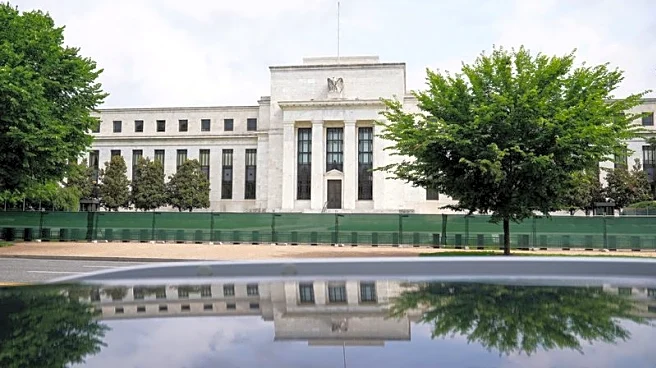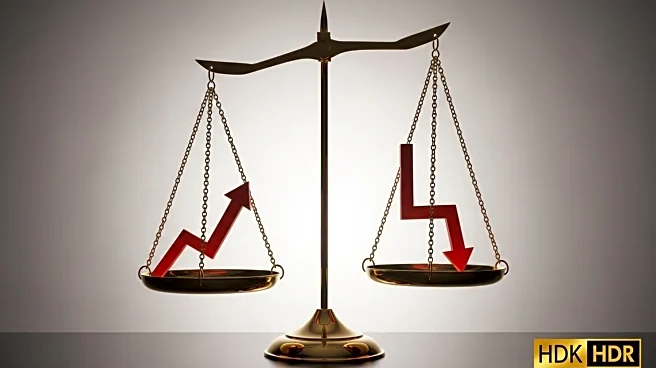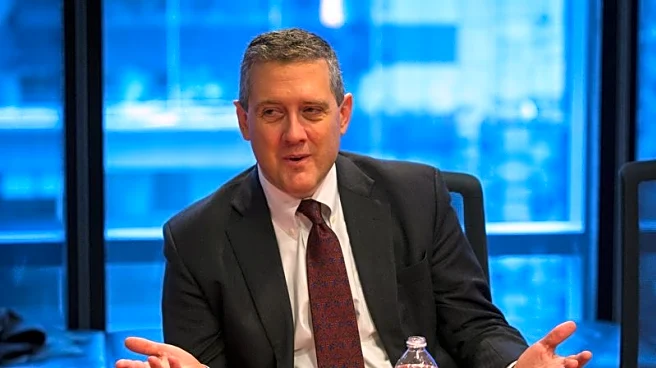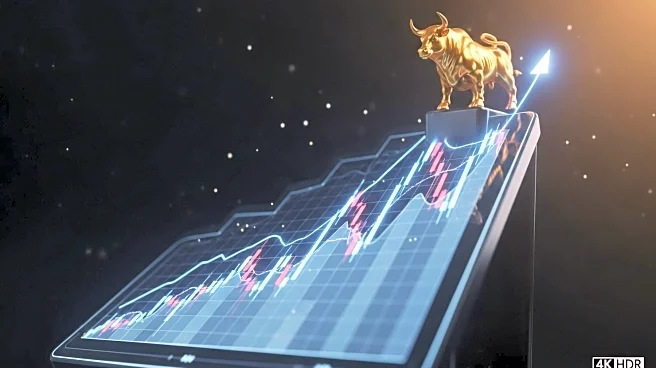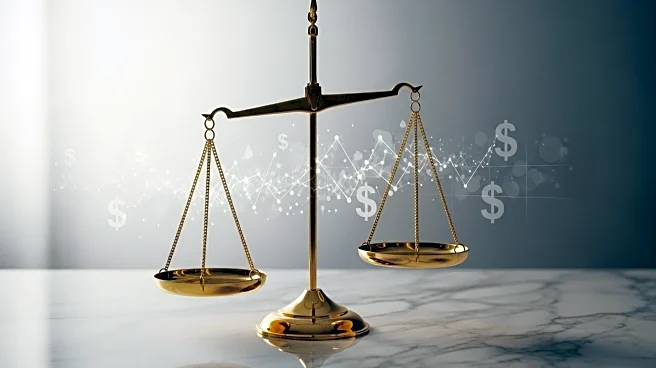What's Happening?
The Federal Reserve's Open Market Committee is meeting this week to deliberate on a potential rate cut, with a quarter-point reduction being the consensus expectation among investors. This decision comes as the Fed shifts its focus from controlling inflation to stimulating economic growth and achieving full employment. Recent economic indicators, such as a slowdown in payroll growth and persistent long-term unemployment, have prompted this change in strategy. The Fed's cautious approach aims to provide enough stimulus to reassure markets without signaling panic or compromising its credibility. The anticipated rate cut is seen as a response to cooling growth and still-elevated inflation, with the real impact likely hinging on the guidance provided by Fed Chair Jerome Powell.
Why It's Important?
The potential rate cut by the Federal Reserve is significant as it could influence various sectors of the U.S. economy, particularly those sensitive to interest rates, such as housing and construction. A reduction in rates may lower borrowing costs for consumers and businesses, potentially unlocking housing demand and easing credit conditions. However, analysts caution that a modest cut may not dramatically shift the broader economy, as long-term rates remain elevated and capital markets tight. The decision also highlights the Fed's balancing act between providing economic stimulus and maintaining its institutional independence amid political pressures. The outcome of this meeting could set the tone for future monetary policy and impact investor confidence.
What's Next?
If the Federal Reserve proceeds with the expected quarter-point rate cut, it could provide near-term relief to borrowers and rate-sensitive sectors. However, the Fed will need to carefully communicate its decision to avoid market misinterpretations. Chair Jerome Powell's press conference following the meeting will be crucial in explaining the Fed's rationale and future policy direction. The Fed will continue to monitor economic data closely, and any further policy adjustments will depend on evolving economic conditions. Stakeholders, including businesses and policymakers, will be watching closely for signals on how the Fed plans to navigate the current economic landscape.

